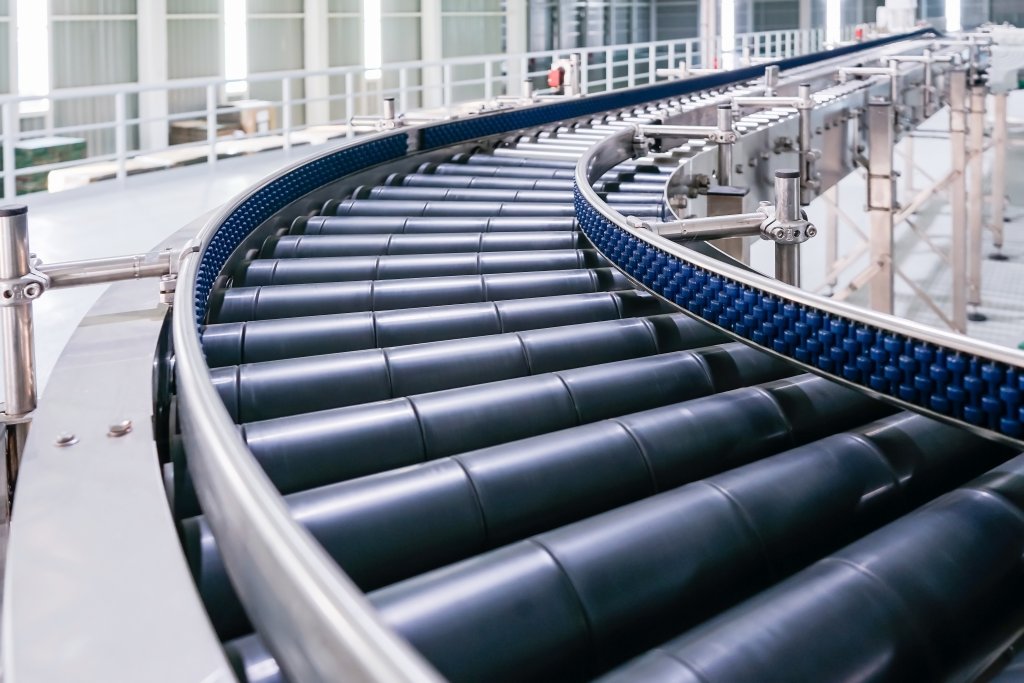How to Set Up a Gravity Roller Conveyor System
Don’t waste time messing up with the installation of your assembly or material processing line

Thanks to their efficiency in safely moving loads without utilizing motor power or manpower, gravity conveyor systems are indispensable to a wide range of industries, including mining, automotive, agricultural, computer, electronic, food processing, aerospace, pharmaceutical, chemical, bottling and canning, and printing and packaging.
While gravity roller conveyors are pricier than other gravity conveyance systems, they have far fewer limitations in terms of what materials they can convey. Unlike the more economical skate-wheel conveyor (also known as a gravity wheel conveyor), gravity roller conveyors can move items with uneven, rimmed, or open bottoms, such as wire bins, wood boxes, canisters, strap-items, blocks, barrels, drums, cans, and lumber.
Types of gravity roller conveyor systems
Gravity roller conveyor systems come in four different designs: straight, curved, spur, and merge. They are constructed with a series of metal tubes with rollers or bearings mounted on axles affixed to the conveyor framework, which is assembled in longitudinal sections. Like all gravity conveyance systems, a roller system is built on an incline, with the slope required for gravity movement configured to the weight of the load.
Before you can begin setting up your gravity roller system, you’ll first need to determine whether it will be a portable or a permanent system.
For a portable gravity roller conveyor system, every section is coupled to the next with shoulder bolts and hook couplings. The system is supported with adjustable tripod stands, with straight or curved sections of 1-3/8″ diameter roller conveyor. The height of the portable conveyor system, which is measured to the top of the roller, can be adjusted with a locking screw that applies tension to the inside support rod. This setup prevents shock loading and will limit the portable conveyor to a capacity of 350 lbs.
For a permanent roller conveyor system, each section is linked with a butt coupling. Stationary supports, anchored to the floor for strength and durability, support the entire conveyor line. Depending on configuration, these supports can be placed at either 5’ or 10’ intervals.
The rollers themselves have their own axles, which secure them in place. These axles are typically spring-loaded, meaning the rollers can easily be pushed to one side in the channel frame for removal and replacement. Rollers can be placed as close together or as far apart as needed for the load and application, but as a rule, there should always be a minimum of three rollers under any box being conveyed (any fewer, and the box will tumble). You can determine the roller centers, or the distance between centers of your rollers, by the width of the box being conveyed.
To further increase efficiency, gravity conveyors and powered conveyors can be combined to form one interconnected system. When both types of conveyors are allowed to work in unison, the energy savings can be remarkable.
Contact us to find more about our gravity conveyors
Want to find the right solutions for your operations? Call us and get a free quote for Warehouse and Material Handling Solutions.
